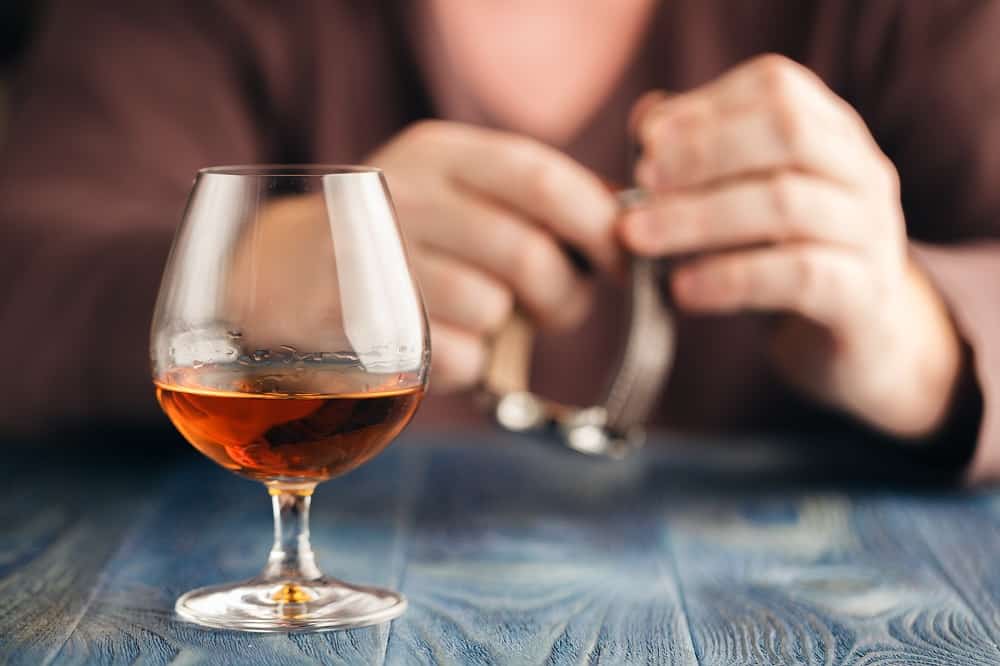“A place where there isn’t any trouble. Do you suppose there is such a place, Toto? There must be…” ~ Dorothy, MGM’s the Wizard of Oz Alcoholism – like other diseases of addiction – is a lonely, frightening disease. Many alcoholics drink to cope or to escape – from stress, from trauma, from anxiety, or from depression. Even when you live in Seattle – the Emerald City – there are times when you wish you could go somewhere far, far away to escape from your problems. Maybe somewhere that is “behind the moon, beyond the rain…”
An Alcoholic is Like the Scarecrow – He Wishes That He Had a New Brain
“I am convinced that the only people worthy of consideration in this world are the unusual ones.” ~ The Scarecrow, The Marvelous Land of Oz Alcoholism is a disease of the brain. Part of the reason seems to be an unfortunate birthright – experts believe that up to 60% of addiction is due to genetics. But there are other causal factors, and all of them can have a profound effect on the brain, making the person more susceptible to alcohol dependence or addiction:
- Childhood exposure to alcohol – Children who are introduced to alcohol before the age of six are up to two-and-a-times more likely to have a drinking problem at age 15, compared to children who did not drink before the age of 13.
- Childhood trauma – More than 70% of adolescents in treatment for substance abuse have a history of trauma.
- Co-occurring disorders – According to some estimates, up to 60% of adults with a severe mental illness experience a substance abuse disorder sometime in their life. This would include such disorders as anxiety, depression, PTSD, bipolar disorder, or schizophrenia, among others.
- Personal behaviors – Engaging in binge drinking can affect the area of the brain that is responsible for impulse control.
But the biggest change to the brain occurs as the addiction develops and worsens. All substances of abuse are recognized by the brain as a “pleasurable” activity that should be rewarded and repeated. When alcohol or a drug of abuse is consumed, the brain massively increases the production of dopamine – the neurotransmitter that is responsible for reward and motivation. In essence, your brain “trains” you to drink or use drugs because when you do, you will be rewarded. But here’s the thing – this artificial production of dopamine is not without consequences. Over time, the brain stops making dopamine naturally. As a result, when the alcohol or drug is not present, the addicted person loses the ability to experience pleasure, to be interested in favorite activities, or even to feel normal. This is the basis for withdrawal – unpleasant symptoms that occur when the alcohol or drug is not present. In fact, the physical discomfort and the psychological torment of withdrawal are what can often trigger someone to relapse during early recovery. During recovery, it is necessary to completely abstain and detoxify from alcohol for a period of several days before the actual treatment process can begin. It can take several months before brain chemistry is rebalanced and dopamine production is back to normal. How profound are the changes to the brain caused by an addiction to alcohol? Alcohol withdrawal can be so severe as to be life-threatening.
“Get your loved one the help they need. Our substance use disorder program accepts many health insurance plans, this is our residential program.”
An Alcoholic is Like the Tin Woodman – He Wishes That He Had a New Heart
“I shall take the heart, for brains do not make one happy, and happiness is the best thing in the world.” ~ The Tin Woodman, The Wonderful Wizard of Oz Alcoholism is a paradoxical disease that somehow affects everyone close to the alcoholic – spouse, partner, children, parents, siblings, other close friends and family members, and even coworkers and employers. Alcoholism is a disease that thrives on denial, deflection, deception, and dishonesty. It is fueled by lies and broken promises:
- Hiding the extent of the drinking – how often or how much
- Drinking alone – In secret, so no one else knows
- Juggling finances or neglecting bills – to have more money to drink
- Missing work or school – in order to drink or because of a hangover
- Withdrawing socially – because alcohol is the only priority
- Relationship issues – separation, divorce, loss of child custody
- Neglecting family obligations – dinners, birthdays, anniversaries, school events
- Mounting legal consequences – DUIs, public intoxication, domestic violence, child neglect
- Health concerns – Brain damage, cirrhosis, internal bleeding, heart disease
All of these problems can be caused or worsened by alcohol abuse. And as the stress, guilt, and shame for each new lie or hurtful behavior happen, it is possible to start developing another disorder, such as depression or anxiety. Then the downward spiral truly begins. In an attempt to feel better, to “numb” negative feelings, or to self-medicate, the alcoholic will drink MORE…resulting in MORE problems…creating MORE negative feelings…leading to MORE drinking. Early in recovery, and alcoholic learns the importance of confronting and making amends for the harm that may have been done to others. This is crucial to a successful recovery because as long as old hurts are allowed to fester, the alcoholic will remain “as sick as their secrets“. Only when amends have been made – or at least earnestly attempted – will be alcoholic be freed from the burdens of unproductive guilt and shame and become able to move forward in their recovery.
An Alcoholic Is Like the Cowardly Lion – He Wishes That He Had Enough Courage
“True courage is in facing danger when you are afraid.” ~ The Cowardly Lion, The Wonderful Wizard Of Oz There is an old acronym in recovery circles – FEAR – False Evidence Appearing Real. Too often, alcoholics have a distorted perception of everything around them – the severity of their alcohol problem, their life, their relationships, their job, and even their personal perception of SELF. This distortion often leads them in the wrong direction, because if they can’t see clearly where they are, then how in the world can they figure out where to go? One of the basic steps of recovery is to conduct a “searching and fearless moral inventory”, where the alcoholic makes a comprehensive list of their strengths and their weaknesses. Taking this inventory has two main benefits:
- Weaknesses – When the alcoholic can muster the courage to honestly and unflinchingly take a look at their own life, they can start figuring out what character defects need work and set to task.
- Strengths – A moral inventory is not just about what NEEDS work, it’s also about what DOES work. When the alcoholic objectively looks at their own positives, it can boost self-esteem and be a source of strength and inspiration whenever the road of recovery gets rocky.
When an alcoholic in recovery finds the courage to work on their weaknesses and rely on their strengths, the meaning of FEAR changes – Face Everything And Recover.
“We treat both addiction and co-occurring disorders and accept many health insurance plans. Take a look at our inpatient program.”
An Alcoholic Is like Dorothy – He Just Wants to Go Home
“If I ever go looking for my heart’s desire again, I won’t look any further than my own backyard. Because if it isn’t there, I never really lost it, to begin with.” ~ Dorothy, The Wonderful Wizard of Oz Alcoholics aren’t bad people – they aren’t morally weak, bankrupt, or lacking in willpower. They are people with an incurable disease that is beyond their control and that has made their lives unmanageable. The goal of recovery is to learn how to live with that disease and how to regain not just SOBRIETY, but also SERENITY. Just as Dorothy has to learn several lessons and complete specific tasks in order to find out that she had the power to return home within her all along, so does the alcoholic have work to do and things to learn including:
- Learning more about the disease of addiction – what it is and what it isn’t
- Learning how to change thoughts and behaviors to change results – the old way of doing things doesn’t work
- Learning how to avoid the people, places, and things associated with drinking – recognizing, avoiding, and eliminating “triggers” is key to a successful recovery
- Learning how to build a personal support system – positive people produce positive results
- Working with the treatment team to create a strategy that works – everyone’s alcohol detoxification and rehabilitation treatment needs are unique
- Putting into practice the lessons learned in recovery – applying what has been learned in recovery to the “real world”
- Giving back – for many alcoholics in recovery, the message did not fully “click” until they began to be of service by carrying the message of sobriety and recovery to other still-suffering alcoholics.
“We accept many health insurance plans. Get your life back in order, take a look at our residential program.”
Recovery Is Like the Yellow Brick Road – All You Have to Do is FOLLOW It
Just as the Yellow Brick Road leads Dorothy and her companions to the Emerald City to meet the Wizard, so, too, is your Road of Recovery laid out before you. All you have to do is keep putting one foot in front of the other, one day at a time until you have reached your destination. Sometimes the journey may seem long, and sometimes you may feel like you are stuck in place, but take your time, because recovery is just as much about the journey as it is the destination. And whenever you feel discouraged, just repeat to yourself, “There’s no place like home…” SOURCES: https://www.ncbi.nlm.nih.gov/pubmed/7950847 https://nctsnet.org/nctsn_assets/pdfs/SAToolkit_1.pdf https://www.hc-sc.gc.ca/hc-ps/alt_formats/hecs-sesc/pdf/pubs/adp-apd/bp_disorder-mp_concomitants/bp_concurrent_mental_health-eng.pdf https://med.stanford.edu/news/all-news/2015/10/enzyme-malfunction-may-be-why-binge-drinking-can-lead-to-alcohol.html



